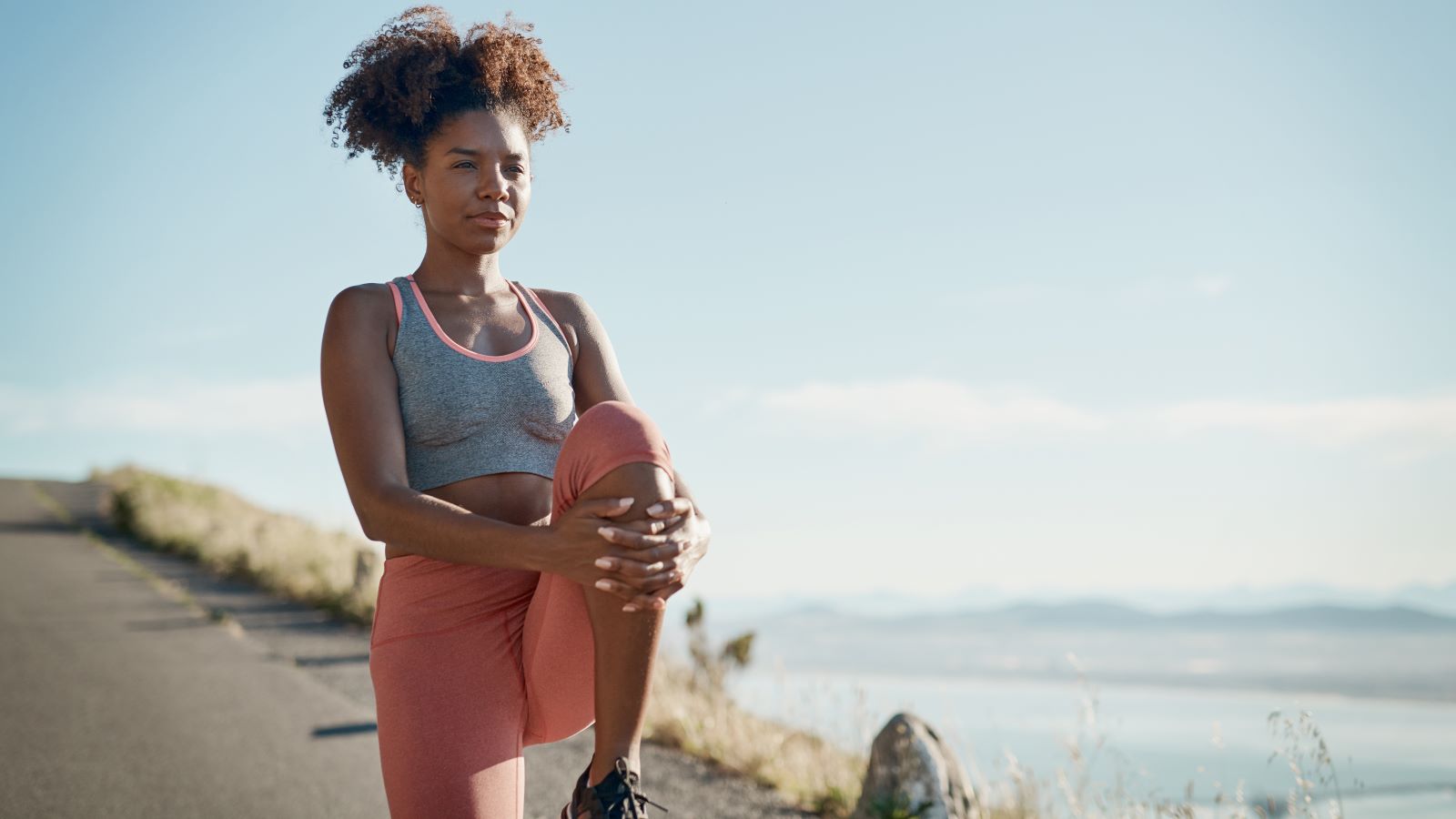<< Back
6 Strength Training Tips to Protect Your Knees From Running

May 20, 2025
Your first love may be a long run, but can your knees go the distance? To protect your knees from running, you need to think beyond the trail.
“Remember: hips, glutes, ankles, feet. If these parts of your body are weak, your knees often suffer,” says sports medicine expert Alan Reznik, MD, an orthopedic surgeon at MidState Medical Center.
That’s where strength training comes in. The following exercises target the areas that your knees rely on most.
1. Squats, with precision.
“Strong glutes equal better leg alignment, and less strain on your knees,” says Dr. Reznik. Squats are an excellent way to get there.
Just keep in mind: It’s important to lower yourself slowly, with control, and with perfect form. Wondering how deep you can safely go?
“Knees over toes is not evil — it’s about control,” says Dr. Reznik. “Depth to your comfort level is fine if your form is flawless.”
> Related: Why Do My Knees Crack When I Squat?
2. Lunges, slowly.
Like squats, lunges are great for strengthening your glutes and hips. That’s crucial for protecting your knees from running.
Again, go slow on the way down.
“Your muscles strengthen better when the exercise is a controlled lengthening, known as ‘eccentric’ exercises, versus rapid or ‘explosive’ loading,” explains Dr. Reznik.
If you notice kneecap pain, skip this one altogether. “Some patients have good reasons to avoid lunges,” adds Dr. Reznik.
3. Step-downs and single-leg Romanian deadlifts.
Along with lunges, these exercises are key for single-leg training. And single-leg training is key for protecting your knees from running.
Make it part of your regular routine.
“Single-leg work builds control and exposes imbalances in your body before they become problems,” says Dr. Reznik.
> Want more health news? Text StartHere to 85209 to sign up for text alerts
4. Knee extensions and reverse sled drags.
Grab a towel or foam roller for short-arc knee extensions, a resistance band for terminal knee extensions (TKEs), and a gym “sled” for reverse sled drags.
All of the above work your inner quads, in particular the VMO, or vastus medialis oblique — a muscle with a big responsibility.
“The inner quadricep is your knee’s shock absorber,” says Dr. Reznik. “These exercises help strengthen them, while centering and stabilizing the knee cap.”
Reverse sled drags have an added benefit: “Walking backwards helps the brain reset how the muscles work together — great for rehab after a running injury,” says Dr. Reznik.
5. Barefoot balance drills and “short foot” exercises.
“Weak foot control means poor knee tracking. These types of exercises build up your foot and ankle strength,” says Dr. Reznik.
Bonus: At a sports performance or physical therapy clinic, ask to use a BAPS board — aka “biomechanical ankle platform system” board — or the “octane” machine.
“These link hip-knee-ankle control for your best function and balance. Achilles stretching and toe raises also help,” says Dr. Reznik.
6. Dynamic stretches.
“Tight calves, quads and hip flexors torque the knee,” says Dr. Reznik. “Do mobility work as insurance.”
Think: leg swings, hip circles, high knees and other dynamic stretches. Do these exercises regularly on their own, and always before running or strength training.
“Cold knees are cranky knees, so warm up like you mean it,” says Dr. Reznik. “Dynamic warm-ups activate stabilizer muscles and prep joint fluid.”
> Related: 5 Best Types of Cardio When You Have Bad Knees
A final word on protecting your knees from running.
Let’s say it together: Don’t ignore pain.
“Minor tweaks become major if ignored,” warns Dr. Reznik. “Sharp pain is a red flag. Pain with swelling is a bright red flag.”
If you feel sharp pain, stop. Give your knees a rest and talk to your coach or a sports medicine expert about how to recover safely.
With their guidance, you’ll not only return to the strength training exercises above — your knees will be ready for anything else you throw at them too.
“These tips don’t just apply to running,” says Dr. Reznik. “They’ll help you bulletproof your knees for almost any sport.”